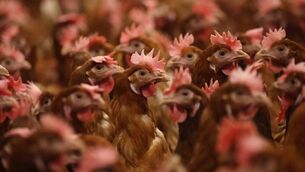Incomes set to rise 13% in 2014 as input costs fall
Data from the CSO show the rapid and persistent increase in feed, fertiliser and farm diesel prices that has been a feature each year since the middle of the last decade.
This increase in production costs was compounded over the last couple of year with the rise in feed and fertiliser use — necessitated to deal with the effects of the fodder crisis. Teagasc estimates that the fodder crisis alone has cost the agriculture sector in the region of €400m. Of course the price of farm outputs such as milk and beef have also been on the rise. But the net result is that the increase in average farm incomes in recent years has been smaller than would have otherwise been achieved if farm production costs had remained static.
So is this trend of successive annual increases in input costs inevitable and set to continue? Well 2014 certainly points to a break in the trend. For the first time since 2006 the price of the three main inputs in Irish agriculture, feed fertiliser and diesel are all set for a reduction next year. In addition the levels of feed and fertiliser use are set to fall considerably assuming we have a return to normal weather conditions.
There are some interesting developments outside of agriculture that lie behind the forecast decline in costs, most notably the increase in the availability of new energy sources from the fracking boom which have taken the heat out of energy commodity markets.
As a consequence Teagasc estimates that the fall in production costs in 2014 will lead to an increase in average agricultural income in Ireland of 13% next year.
Incomes on cattle farms should increase to a greater extent that those on dairy farms because the price of milk is likely to fall in 2014 while the price of beef should at least hold steady and possibly increase.
So will the forecast fall in production costs in 2014 be a once off and will we then return to the trend of rising costs that have been the pattern of earlier years? Our thinking at present is there should be a lot less inflation in production costs over the next five years than we have seen in the previous five years. There is a growing consensus among economists internationally that the commodity prices boom that was led by price rises in the energy sector is now at an end.
What will this mean for farming? Most likely it will mean that the future path of production costs in agriculture towards the end of this decade is likely to be flat. That is not to say we won’t continue to see some volatility in production costs, but it does mean that prices averaged over a number of years will not show an increasing trend.
Broadly this has to be seen as good news for farmers. The drivers for the rise in the costs of production in farming came from outside agriculture and were outside the control of farmers and this means the solution had to come from outside the sector also. The link between energy markets, production costs in agriculture and incomes in the agriculture sector will remain an issue for policy makers and those who work in agriculture. Certainly, for the short term at least, the stabilisation in energy markets does seem to be a good news story in terms of farm income.
* Trevor Donnellan, Teagasc economist, Rural Economy Development Programme, Athenry










